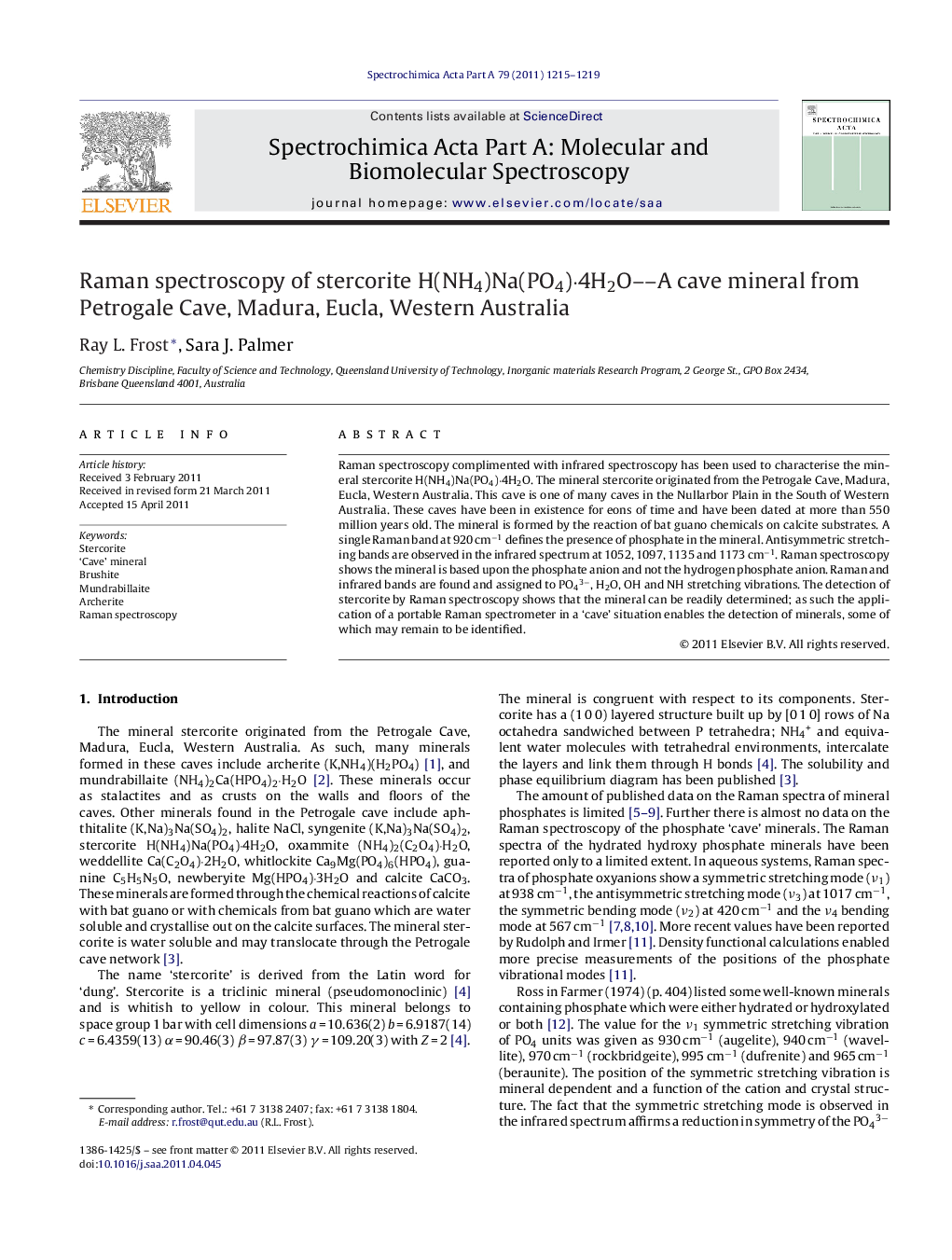| Article ID | Journal | Published Year | Pages | File Type |
|---|---|---|---|---|
| 1236510 | Spectrochimica Acta Part A: Molecular and Biomolecular Spectroscopy | 2011 | 5 Pages |
Raman spectroscopy complimented with infrared spectroscopy has been used to characterise the mineral stercorite H(NH4)Na(PO4)·4H2O. The mineral stercorite originated from the Petrogale Cave, Madura, Eucla, Western Australia. This cave is one of many caves in the Nullarbor Plain in the South of Western Australia. These caves have been in existence for eons of time and have been dated at more than 550 million years old. The mineral is formed by the reaction of bat guano chemicals on calcite substrates. A single Raman band at 920 cm−1 defines the presence of phosphate in the mineral. Antisymmetric stretching bands are observed in the infrared spectrum at 1052, 1097, 1135 and 1173 cm−1. Raman spectroscopy shows the mineral is based upon the phosphate anion and not the hydrogen phosphate anion. Raman and infrared bands are found and assigned to PO43−, H2O, OH and NH stretching vibrations. The detection of stercorite by Raman spectroscopy shows that the mineral can be readily determined; as such the application of a portable Raman spectrometer in a ‘cave’ situation enables the detection of minerals, some of which may remain to be identified.
Graphical abstractFigure optionsDownload full-size imageDownload as PowerPoint slideHighlights► Research into cave minerals is important. ► Stercorite originated from the Petrogale Cave, Madura, Eucla, Western Australia. ► Raman spectroscopy shows the mineral is based upon the phosphate anion and not the hydrogen phosphate anion. ► Portable Raman spectrometer enables the detection of cave minerals, some of which may remain to be identified.
